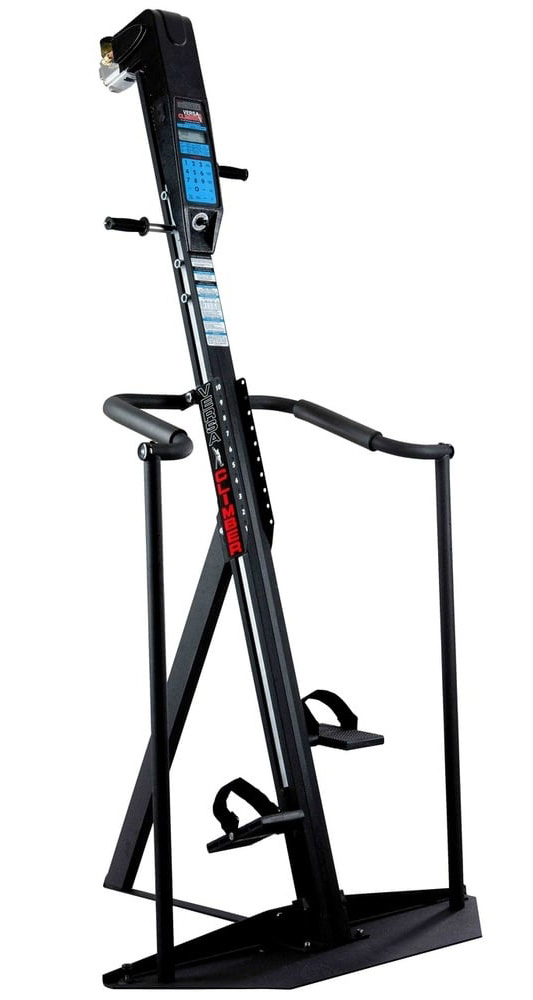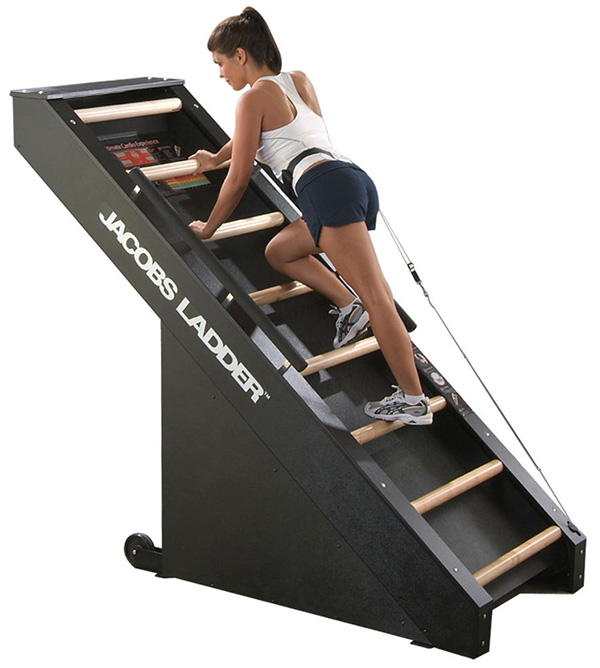Climbing Machine

An intimidating piece of the equipment, the climbing machine is a great total body workout device. Available in a vertical format as well as a 40 degree angle format. What truly separates climbing machines from other pieces of cardio equipment is that it utilizes mobile grips. Not only do these grips supply support, by they are also critical to the workout.

Vertical Design (VersaClimber®)
Vertical Format (VersaClimber®)
The vertical climbing machine employs the use of foot plates similar to the stepper machine. The main difference is that due to the greater range of motion the climber provides, the calves as well as the thighs are engaged. Different models of climbing machines will often have different maximums on range of motion, leading to a more intense workout.
The hand grips operate on a resistance meter just like the foot plates but require not only a pulling motion but a pushing motion. This allows for much of the upper body to be worked out including the biceps, triceps, lats, and shoulders. It should be noted that different climbing machines offer different ranges of motion for the grips. Similar to the foot plates, the greater the range of motion, the more intense the workout will be.
Like many pieces of cardio equipment, climbing machines generally offer a built-in heart rate monitor, variable resistance levels, calories burned, etc. The climbing machine has a unique way of measuring distance traveled: vertical distance climbed. What makes this a really fun feature is that some climbing machines have built in workouts that allow the user to simulate climbing famous structures such as Mt. Everest.
40 Degree Angle Format (Jacobs Ladder™)
Vastly different from the vertical format, the 40 degree angle format does not have the typical foot pads or handles to grip. It operates in a similar fashion to a stair machine but with a never ending series of rungs (instead of stairs), thus simulating the action of climbing a ladder. This motion is unique because the pushing and pulling is not resistance based, it is actually paced off of how fast you are moving which leads to another great benefit, the device is self-powered.

40 Degree Design (Jacobs Ladder™)
Due to the angle of the device, the spine is relieved of stress. There is also no cheating the machine by taking smaller movements because all the rungs are equally spaced, forcing a full range of motion each and every time. While exercising on this piece of equipment, the form required incorporates the core and obliques to support the climbing motion.
A small cable is attached to a belt that goes around the waist and acts as a security strap. This cable is adjustable based on the individuals height for added comfort. Also, there are stationary grips to the size of the moving parts. These can be used as supports when exhausted or when one wishes to focus completely on the lower body motions.
Pros of climbing machines:
- Incorporates the upper body and lower body for a total body calorie burn
- Very little impact
- Adjustable for all skill levels
- Some are supplied with custom climbing simulations
- Ideal for High Intensity Interval Training (HIIT)
Cons of climbing machines:
- May seem intimidating to novices
- Expensive compared to other pieces of equipment




